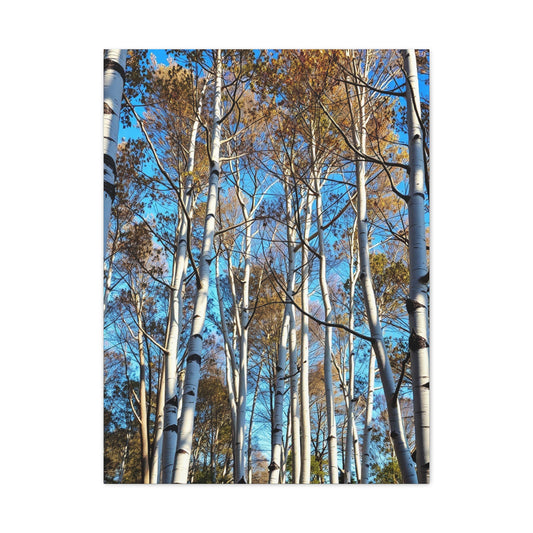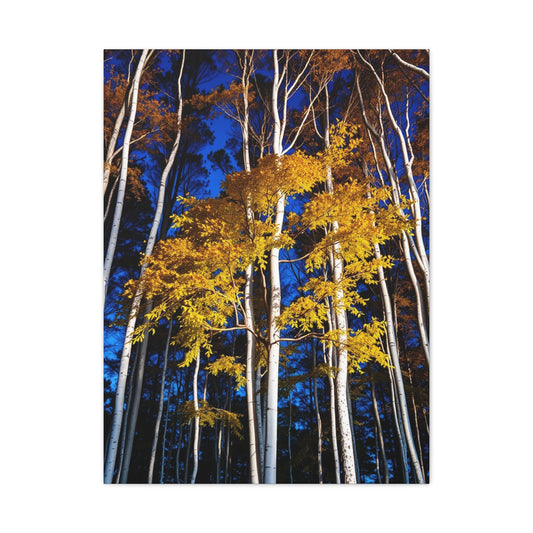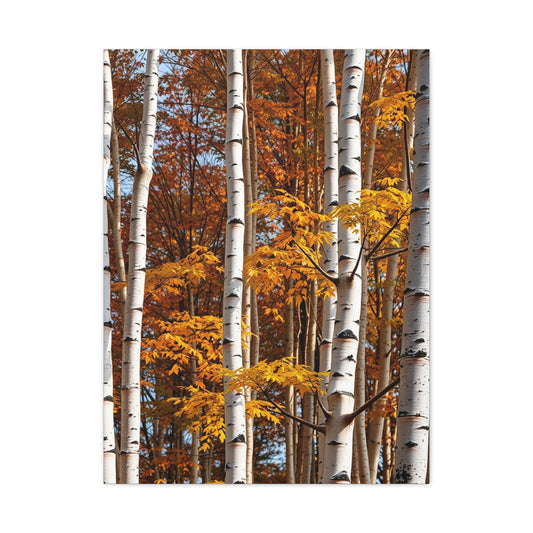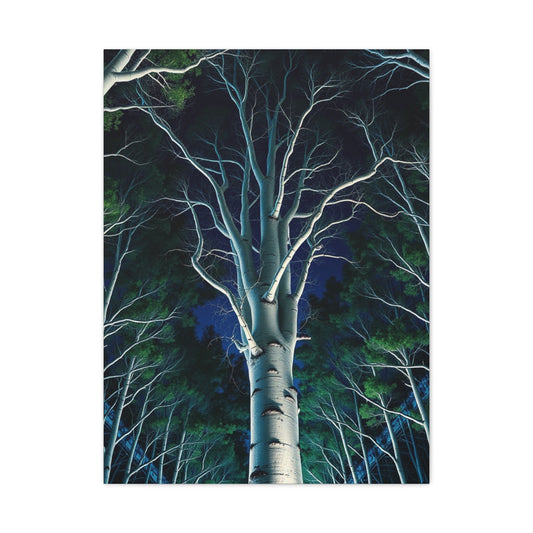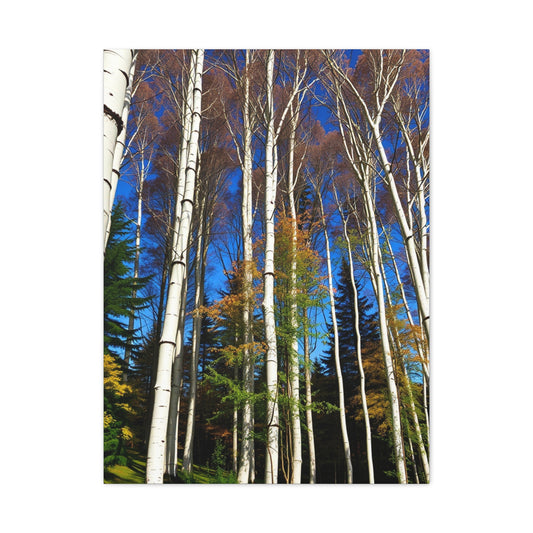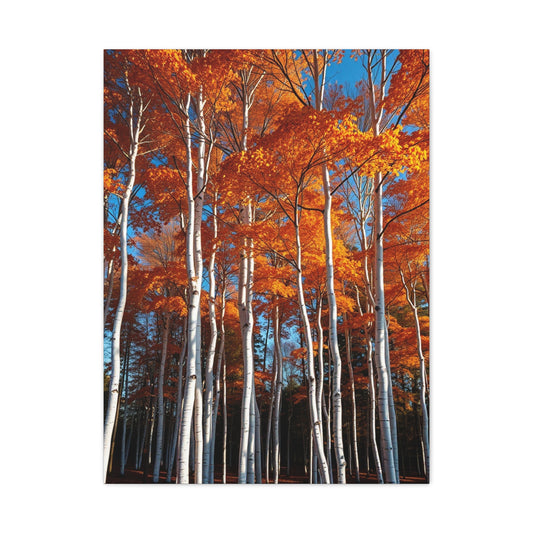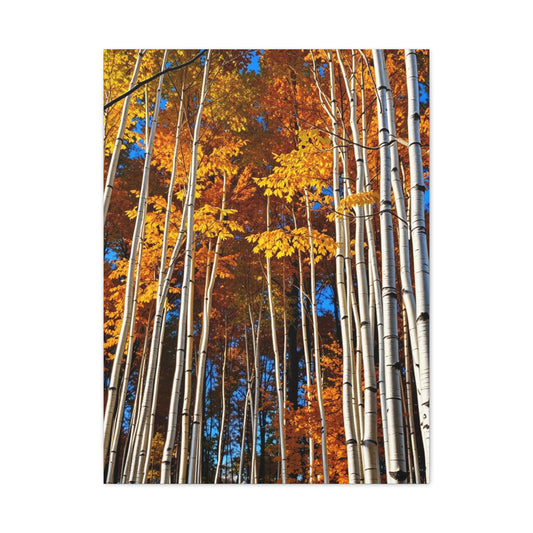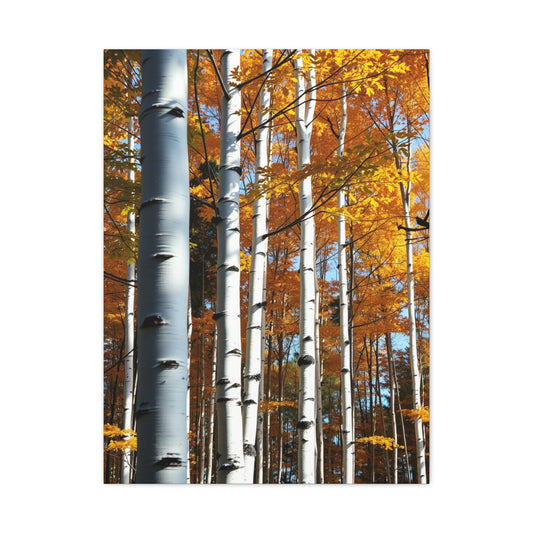The Enchanting Beauty of Aspen Trees and Birch Trees in Contemporary Wall Art
The magnificent transformation of seasonal landscapes creates an unparalleled spectacle that captivates photographers, artists, and interior design enthusiasts across continents. Among nature's most extraordinary subjects, aspen trees and birch trees emerge as sublime protagonists in the contemporary wall art movement, offering homeowners unprecedented opportunities to infuse their living spaces with the ethereal beauty of forest landscapes. These remarkable specimens transcend ordinary botanical subjects, evolving into powerful design elements that harmonize natural magnificence with sophisticated interior aesthetics.
The enchantment of autumn's arrival brings forth aromatic symphonies of cinnamon-spiced beverages, harvest celebrations, and anticipatory preparations for festive gatherings that unite communities worldwide. This transformative season unveils nature's most spectacular performances, where deciduous forests become living galleries displaying chromatic masterpieces that surpass human artistic imagination. Within this natural exhibition, certain arboreal subjects distinguish themselves through extraordinary visual characteristics that translate magnificently into contemporary wall art applications.
The contemporary appreciation for organic interior elements has elevated natural photography and botanical artwork to unprecedented popularity levels. Modern homeowners increasingly seek authentic connections to wilderness environments through carefully curated wall art selections that bring tranquil forest atmospheres into urban living spaces. This growing trend reflects deeper psychological needs for natural harmony within increasingly digitized lifestyles, where genuine connections to organic beauty provide essential balance and restorative experiences.
Professional nature photographers and fine artists recognize the exceptional photogenic qualities inherent in aspen and birch tree compositions, understanding that these subjects offer inexhaustible creative possibilities across diverse seasonal conditions and environmental contexts. The distinctive characteristics of these species create compelling visual narratives that resonate with viewers seeking meaningful artistic experiences that transcend superficial decoration.
The integration of tree-themed wall art into contemporary interiors represents more than aesthetic enhancement; it embodies philosophical connections to natural rhythms, seasonal cycles, and ecological awareness that enriches daily living experiences. These artistic selections transform residential and commercial spaces into sanctuaries where occupants can experience psychological restoration and spiritual renewal through sustained engagement with nature's sublime beauty.
Understanding the Distinctive Characteristics That Define Exceptional Tree Subjects
The realm of arboreal photography and artistic interpretation encompasses numerous species, yet aspen trees and birch trees consistently emerge as premier subjects due to their extraordinary visual properties and symbolic significance. These specimens possess unique structural characteristics, chromatic variations, and seasonal transformations that provide inexhaustible inspiration for artistic expression across diverse mediums and stylistic approaches.
Professional identification of these species requires understanding subtle yet definitive characteristics that distinguish each variety from similar woodland specimens. Developing expertise in recognizing these differences enhances appreciation for the specific aesthetic qualities that make certain tree subjects particularly compelling for wall art applications, enabling more informed selection processes when curating natural-themed interior collections.
The scientific classification and ecological roles of these species contribute additional layers of meaning that enrich their artistic significance beyond purely visual considerations. Understanding the environmental functions, growth patterns, and ecosystem relationships of aspen and birch trees provides contextual depth that transforms decorative wall art into educational and inspirational focal points within contemporary living spaces.
Regional variations in tree characteristics create opportunities for personalized artistic selections that reflect specific geographical connections or travel experiences. Different climate zones, soil conditions, and elevation levels produce distinctive variations in bark patterns, foliage coloration, and overall tree architecture that can be specifically selected to commemorate meaningful locations or represent desired environmental aesthetics.
The seasonal metamorphoses experienced by these deciduous species offer dynamic artistic possibilities that can be strategically employed to create evolving interior experiences throughout annual cycles. Spring emergence, summer maturation, autumn transformation, and winter dormancy each provide distinct aesthetic characteristics that can be incorporated into comprehensive wall art collections celebrating the complete natural lifecycle.
Exploring the Mystical Heritage and Scientific Significance of Forest Ecosystems
Throughout human civilization, trees have occupied sacred positions within cultural mythologies, spiritual traditions, and folklore narratives that span diverse civilizations and historical periods. Ancient Greek cosmology attributed divine spirits and ethereal nymphs to specific tree species, creating protective reverence that preserved forest ecosystems through spiritual rather than purely environmental motivations. These cultural associations continue influencing contemporary aesthetic preferences and symbolic interpretations of tree-themed artistic expressions.
Egyptian mythological traditions established profound connections between human souls and arboreal life forces, suggesting that individual destinies remained intertwined with forest health and tree longevity. Such beliefs created cultural frameworks where trees represented continuity, wisdom, and spiritual connection that transcended individual lifespans, concepts that continue resonating within modern interior design philosophies emphasizing natural harmony and environmental consciousness.
Contemporary scientific understanding reinforces ancient intuitions about tree importance through documented ecological functions that support planetary health and human survival. Individual mature trees generate sufficient oxygen to sustain four adult humans throughout complete daily cycles while simultaneously processing over forty-eight pounds of atmospheric carbon dioxide annually, demonstrating quantifiable environmental contributions that validate spiritual reverence with measurable scientific evidence.
Global forest coverage encompasses approximately thirty percent of terrestrial surface area, creating vast wilderness preserves that provide aesthetic inspiration, recreational opportunities, and essential ecological services supporting worldwide biodiversity. These expansive natural galleries offer unlimited subjects for artistic interpretation while serving critical environmental functions that maintain atmospheric balance and climate stability essential for human civilization.
The intersection of mythological significance and scientific importance creates powerful symbolic resonance that elevates tree-themed wall art beyond decorative applications into meaningful statements about environmental values, cultural heritage, and philosophical perspectives on humanity's relationship with natural systems. Such depth transforms residential art collections into personal expressions of environmental consciousness and spiritual connection.
Distinguishing Between Aspen and Birch Species Through Detailed Observation
Professional identification of aspen trees and birch trees requires systematic observation of multiple distinguishing characteristics that become apparent through careful examination of bark texture, coloration patterns, growth habits, and foliage structures. Developing expertise in recognizing these differences enhances appreciation for species-specific aesthetic qualities while enabling informed artistic selection processes based on desired visual effects and symbolic associations.
Bark characteristics provide the most reliable identification criteria, with birch species displaying distinctively bright white exterior surfaces interrupted by characteristic horizontal markings that create natural striping patterns. The papery texture of birch bark often separates from underlying trunk structures, creating loose sheets that can be manually removed without damaging the tree's protective layers. This distinctive peeling characteristic contributes to birch trees' dynamic visual appeal as artistic subjects.
Aspen bark presents contrasting characteristics through whitish coloration enhanced by subtle greenish undertones that become more pronounced in younger specimens. The bark surface adheres tightly to underlying structures without the papery separation characteristic of birch species, creating smooth, continuous surfaces marked by distinctive eye-like knots and scarring patterns that add visual interest and unique identification features.
Foliage characteristics provide secondary identification criteria through leaf shape, serration patterns, and seasonal color development. Birch leaves display elongated, spear-like configurations with double-serrated edges that create intricate outline patterns, while aspen leaves develop more rounded, heart-shaped profiles with simpler serration patterns and shorter overall proportions.
The growth patterns and environmental preferences of each species create additional distinguishing features observable in natural settings and photographic compositions. Understanding these habitat preferences enables more accurate species identification while providing insights into optimal seasonal timing and environmental conditions for capturing exceptional artistic imagery of each variety.
Examining Specialized Growth Requirements and Environmental Adaptations
The cultivation and natural distribution of aspen trees and birch trees demonstrate fascinating adaptations to diverse environmental conditions while revealing specific requirements that influence their aesthetic characteristics and photographic potential. Understanding these ecological preferences enhances appreciation for the environmental contexts that produce the most visually compelling specimens suitable for wall art applications.
Both species demonstrate strong preferences for well-drained soil conditions that maintain adequate moisture without creating waterlogged root environments. This shared requirement reflects evolutionary adaptations to temperate forest ecosystems where seasonal precipitation patterns create cyclical wet and dry periods requiring flexible root systems and efficient water management capabilities.
Sunlight requirements reveal significant differences between species that influence their natural distribution patterns and aesthetic characteristics. Aspen trees demonstrate absolute requirements for full solar exposure, thriving exclusively in open meadows, forest clearings, and areas with minimal canopy coverage. This preference for intense illumination contributes to the characteristic golden foliage coloration and vibrant bark tones that make aspens particularly attractive as photographic subjects.
Birch trees exhibit greater tolerance for partially shaded conditions, enabling successful growth in forest environments with moderate canopy coverage and filtered sunlight exposure. This adaptability allows birch specimens to develop in more diverse environmental contexts while maintaining their distinctive white bark characteristics and graceful branching patterns that translate beautifully into artistic compositions.
Root system characteristics create additional distinctions between species that influence their growth patterns and visual characteristics. Birch trees develop shallow, spreading root networks that require loose, minimally compacted soil conditions, while aspen trees demonstrate greater soil tolerance and can successfully establish in various substrate conditions including clay, sand, and rocky soils.
The unique colonial growth pattern of aspen trees creates one of their most distinctive and artistically valuable characteristics. Individual aspen specimens frequently develop from shared root systems that support multiple trunks across extensive areas, creating grove formations that function as single organisms connected through underground networks. This growth pattern produces the iconic aspen stands that provide exceptional subjects for panoramic photography and large-scale wall art installations.
Analyzing Distinctive Bark Features and Identification Characteristics
The accurate identification and artistic appreciation of aspen trees and birch trees requires detailed understanding of bark characteristics that provide reliable distinguishing features across seasonal conditions and developmental stages. These surface patterns, colorations, and textural qualities contribute significantly to the aesthetic appeal of both species while offering practical identification criteria for photographers and artists seeking specific visual effects.
Birch bark characteristics include the species' signature bright white coloration interrupted by distinctive horizontal markings that create natural banding patterns across trunk surfaces. These linear features, technically termed lenticels, serve essential respiratory functions while creating visually striking patterns that translate exceptionally well into high-contrast photographic compositions and artistic interpretations.
The papery texture of mature birch bark creates unique visual and tactile characteristics that distinguish the species from all other North American tree varieties. This distinctive peeling quality results from the continuous development of new bark layers beneath existing surfaces, causing older exterior sections to separate and curl away from underlying structures in characteristic sheet formations.
Aspen bark presents contrasting visual characteristics through smooth, tight-fitting surfaces that remain securely attached to underlying trunk structures throughout the tree's lifecycle. The characteristic whitish coloration enhanced by subtle green undertones creates distinctive color variations that change with lighting conditions and seasonal factors, providing dynamic visual interest for artistic applications.
The eye-like knot formations commonly found on aspen trunks create distinctive identification features that add significant visual interest to photographic compositions. These natural markings result from branch development patterns and healing processes that create raised, circular formations resembling watchful eyes, contributing to the mystical associations often attributed to aspen groves in folklore and artistic interpretation.
Scarring patterns on both species reflect environmental history and provide unique individual characteristics that distinguish specific specimens from others within the same grove or forest area. Lightning strikes, animal damage, human interaction, and natural aging processes create distinctive marking patterns that add personality and individual character to artistic subjects.
Celebrating Year-Round Aesthetic Appeal and Seasonal Transformations
The exceptional versatility of aspen trees and birch trees as artistic subjects stems from their ability to provide compelling visual interest throughout complete annual cycles, with each seasonal phase offering distinct aesthetic characteristics suitable for diverse interior design applications and personal preferences. This year-round appeal makes tree-themed wall art particularly valuable for creating dynamic interior environments that reflect natural rhythms and seasonal changes.
Spring emergence presents delicate, ethereal characteristics as both species develop fresh foliage in subtle green tones that create soft, impressionistic effects ideal for creating calm, restorative interior atmospheres. The tender new leaves, small and perfectly formed, catch and filter natural light in ways that produce luminous photographic effects and gentle artistic compositions suitable for bedrooms, meditation spaces, and areas designed for relaxation.
Summer maturation brings full foliage development that creates dense, lush canopy effects and maximum color intensity. During this period, aspen and birch trees reach their peak structural definition with fully developed branch systems supporting complete leaf coverage that creates complex layering effects and intricate shadow patterns. Summer imagery works exceptionally well for creating vibrant, energetic interior focal points in living rooms, dining areas, and social spaces.
Autumn transformation represents the pinnacle of aesthetic appeal for both species as chlorophyll breakdown reveals brilliant underlying pigments that create spectacular color displays ranging from golden yellows to vibrant oranges and deep reds. This seasonal metamorphosis provides the most popular and commercially successful tree imagery for wall art applications, offering warm, inviting color palettes that complement diverse interior design schemes.
Winter dormancy reveals structural elegance through bare branch patterns that create intricate silhouettes against neutral backgrounds. The stark beauty of leafless trees emphasizes bark characteristics and branching architecture while providing minimalist aesthetic effects that work exceptionally well in contemporary and modern interior settings seeking clean, uncluttered visual elements.
Seasonal transition periods offer particularly dynamic artistic opportunities as trees display simultaneous characteristics of multiple phases, creating complex visual narratives that capture the continuous evolution of natural systems. These transitional images often provide the most compelling artistic subjects due to their temporal complexity and emotional resonance.
Distinguishing Foliage Characteristics and Leaf Identification Features
Professional identification and artistic appreciation of aspen trees and birch trees benefits significantly from understanding distinctive foliage characteristics that provide reliable identification criteria while contributing to the overall aesthetic appeal of each species. Leaf shape, serration patterns, color development, and seasonal changes create species-specific visual signatures that influence artistic selection and interior design applications.
Birch foliage displays elongated, spear-shaped leaf configurations with sharply pointed tips and double-serrated edge patterns that create intricate outline definitions. These serrations consist of larger primary teeth interrupted by smaller secondary indentations that produce complex edge patterns contributing to the overall delicate appearance characteristic of birch specimens. The length proportions typically exceed width measurements, creating narrow, elegant leaf profiles.
Aspen leaves present contrasting characteristics through broader, more rounded configurations that approach heart-shaped profiles with simple serration patterns consisting of small, uniform teeth around leaf perimeters. The overall proportions tend toward stouter, more compact profiles with length and width measurements maintaining closer relationships than typically observed in birch specimens.
Color development patterns reveal significant differences between species throughout seasonal progression. Birch leaves typically maintain consistent green tones throughout summer months before transitioning to bright golden yellows during autumn transformation. The color change occurs relatively uniformly across individual leaves and entire tree canopies, creating cohesive color effects.
Aspen foliage demonstrates more dynamic color variation with individual leaves displaying multiple hues simultaneously during transition periods. Autumn aspen leaves may exhibit golden yellows, bright oranges, deep reds, and even purple tones within single specimens, creating vibrant, multicolored effects that provide exceptional artistic potential for wall art applications seeking dramatic color impact.
Leaf arrangement and attachment methods create additional distinguishing characteristics that influence overall tree appearance and photographic potential. Understanding these subtle differences enhances appreciation for species-specific aesthetic qualities while enabling more informed artistic selection processes based on desired visual effects.
Creating Stunning Interior Focal Points Through Strategic Art Placement
The integration of aspen tree and birch tree wall art into contemporary interior environments requires understanding fundamental design principles that maximize aesthetic impact while creating harmonious relationships between natural imagery and architectural elements. Strategic placement considerations encompass scale relationships, color coordination, lighting optimization, and thematic coherence that transforms individual artworks into integral components of comprehensive design schemes.
Scale selection represents perhaps the most critical factor in achieving successful tree art integration, as oversized pieces can overwhelm intimate spaces while undersized selections may disappear within expansive architectural contexts. Large-format aspen grove imagery works exceptionally well in spacious living areas where panoramic compositions can create immersive environmental effects that transport viewers into forest settings through visual illusion and psychological engagement.
Single tree portraits function effectively as focal points in more intimate spaces where detailed observation and contemplative engagement enhance the viewing experience. These pieces work particularly well in bedrooms, studies, and personal spaces where close examination of bark textures, branching patterns, and seasonal characteristics can provide ongoing visual interest and emotional connection.
Color coordination between tree imagery and existing interior elements requires careful consideration of both dominant hues and subtle accent tones that appear within photographic compositions. Autumn aspen imagery with golden and orange tonalities complements warm interior color schemes featuring earth tones, rich woods, and natural materials, while creating vibrant contrast effects against cool gray and blue architectural elements.
Birch tree imagery with predominantly white and green coloration provides versatile coordination possibilities that work effectively with both warm and cool interior color schemes. The neutral bark tones serve as excellent bridges between contrasting color elements while the green foliage accents can be echoed through plant selections, textile choices, and decorative accessories.
Lighting considerations significantly influence the visual impact and color accuracy of tree-themed wall art, with natural illumination enhancing the organic qualities of forest imagery while artificial lighting systems can create dramatic effects that emphasize specific artistic elements. Strategic placement near windows or skylights takes advantage of changing natural light conditions that mirror the outdoor environmental contexts where the original photographs were captured.
Exploring Creative Applications Beyond Traditional Wall Displays
The versatility of aspen tree and birch tree imagery extends far beyond conventional framed wall installations, offering numerous creative application possibilities that can enhance interior environments through innovative display methods and multi-functional design integration. These alternative approaches maximize the aesthetic impact of natural imagery while addressing practical space limitations and diverse functional requirements.
Multi-panel installations create panoramic effects that capture the expansive quality of natural forest environments while accommodating architectural constraints such as windows, doorways, and furniture placement that might interrupt single large-scale artworks. Triptych and quadriptych arrangements allow for flexible spacing adaptations while maintaining visual continuity across segmented compositions.
Curved wall installations utilize specialized mounting systems that follow architectural contours, creating immersive wraparound effects that enhance the environmental illusion of being surrounded by forest landscapes. This approach works particularly effectively in curved hallways, circular rooms, and spaces with non-traditional architectural geometries.
Ceiling applications transform overhead spaces into forest canopy simulations through strategic placement of foliage imagery that creates upward visual interest and spatial expansion effects. This technique works especially well in rooms with high ceilings where conventional wall art might appear disproportionately small or disconnected from the overall space.
Integrated furniture applications incorporate tree imagery into custom cabinetry, room dividers, and functional elements that serve dual purposes as both practical furniture and artistic displays. These solutions maximize space efficiency while maintaining aesthetic impact in compact living environments where wall space remains at a premium.
Digital display integration utilizes electronic screens and projection systems to create dynamic tree imagery that changes with seasons, weather conditions, or time of day, providing evolving natural environments that maintain long-term visual interest and prevent the static quality that can develop with permanent installations.
Textile applications translate tree imagery onto fabric surfaces for curtains, upholstery, and decorative elements that extend natural themes throughout interior environments while providing textural variety and functional benefits. These applications work particularly well for creating cohesive design schemes that incorporate natural motifs across multiple design elements.
Understanding the Psychological and Wellness Benefits of Natural Imagery
Contemporary research in environmental psychology and wellness design demonstrates significant positive impacts associated with natural imagery exposure within interior environments, validating traditional intuitions about the restorative qualities of forest landscapes and tree-themed artistic elements. These findings support strategic integration of aspen tree and birch tree wall art as functional wellness interventions rather than purely decorative selections.
Stress reduction benefits associated with natural imagery exposure occur through measurable physiological responses including decreased cortisol production, reduced blood pressure, and improved heart rate variability. Forest imagery specifically demonstrates particularly effective stress-reduction properties compared to urban or abstract artistic subjects, suggesting evolutionary connections to natural environments that continue influencing contemporary psychological responses.
Attention restoration theory explains how natural imagery helps recover from mental fatigue and concentration difficulties by providing visual stimulation that engages involuntary attention systems while allowing voluntary attention mechanisms to rest and recover. Tree imagery with complex natural patterns and seasonal variations provides ideal attention restoration stimuli that can improve productivity and cognitive performance in work environments.
Biophilic design principles recognize innate human connections to natural systems and recommend strategic integration of natural elements, including imagery, to improve psychological well-being and environmental satisfaction within built environments. Tree-themed wall art represents accessible and practical biophilic design applications that can be easily implemented across diverse architectural contexts and budget limitations.
Seasonal affective disorder mitigation benefits emerge from exposure to bright, natural imagery during winter months when direct nature contact remains limited due to weather constraints and reduced daylight hours. Vibrant autumn tree imagery provides color therapy benefits that help maintain positive mood states and emotional balance throughout challenging seasonal transitions.
Meditation and mindfulness practices benefit significantly from natural imagery that provides focal points for contemplative exercises and breathing techniques. The intricate patterns, seasonal changes, and symbolic associations of tree imagery create ideal meditation supports that facilitate deeper practice and enhanced relaxation benefits.
Selecting Optimal Photographic Qualities and Artistic Techniques
The exceptional wall art potential of aspen tree and birch tree imagery depends significantly on photographic technical excellence and artistic interpretation that captures the essential aesthetic qualities while providing sufficient resolution and color accuracy for large-format display applications. Understanding quality criteria enables informed selection processes that ensure long-term satisfaction and maximum visual impact.
Resolution requirements for wall art applications typically exceed standard photographic needs due to the enlarged viewing distances and enhanced detail visibility associated with printed displays. Professional tree photography should maintain sufficient pixel density to support enlargements up to 40 inches or larger without visible pixelation or quality degradation that diminishes artistic impact.
Color accuracy becomes particularly critical for tree imagery where seasonal color variations and subtle bark tonalities represent primary aesthetic attractions. Professional color calibration throughout the capture, processing, and printing workflow ensures accurate reproduction of natural colors that maintain authenticity and emotional connection to original forest experiences.
Dynamic range capabilities determine the ability to capture simultaneous shadow and highlight details that characterize forest environments where bright sky areas contrast with darker understory elements. High dynamic range processing techniques reveal detail throughout complete tonal ranges while maintaining natural appearance and avoiding artificial-looking enhancement effects.
Compositional excellence distinguishes exceptional tree photography through strategic use of foreground, middle ground, and background elements that create depth and visual interest beyond simple subject documentation. Leading lines, framing elements, and strategic positioning create engaging compositions that maintain long-term viewing interest and artistic sophistication.
Seasonal timing considerations significantly influence the aesthetic qualities and market appeal of tree imagery, with autumn color development providing the most commercially successful and visually dramatic results. Professional photographers monitor seasonal progression and weather conditions to capture peak color moments that maximize artistic impact and commercial value.
Technical consistency across series imagery enables coherent multi-piece installations where individual photographs work together as unified artistic statements rather than disconnected individual pieces. Consistent lighting, color processing, and compositional approaches create visual harmony that enhances overall design integration and aesthetic impact.
Maintenance and Preservation Strategies for Long-Term Investment Protection
Professional quality tree-themed wall art represents significant financial investment that requires appropriate maintenance and preservation strategies to ensure long-term aesthetic appeal and value retention. Understanding proper care techniques protects investment value while maintaining optimal display quality throughout extended ownership periods.
UV protection represents the most critical preservation consideration for photographic prints and artistic reproductions displayed in interior environments with natural light exposure. Professional UV-filtering glazing materials prevent color fading and material degradation while maintaining optimal viewing clarity and color accuracy. Regular assessment of UV protection effectiveness ensures continued preservation benefits.
Climate control considerations include temperature stability and humidity management that prevent expansion and contraction cycles capable of causing mounting stress, material warping, and adhesive failure. Professional framing techniques incorporate expansion allowances and appropriate materials selection that accommodate normal environmental variations without compromising artwork integrity.
Cleaning protocols for framed artwork require appropriate techniques and materials that remove accumulated dust and environmental contaminants without damaging surface coatings or underlying materials. Professional conservation suppliers provide specialized cleaning products and techniques appropriate for different artwork types and mounting configurations.
Professional inspection services provide expert assessment of artwork condition and preservation needs while recommending appropriate intervention strategies when deterioration signs become apparent. Regular professional evaluation prevents minor issues from developing into major problems requiring expensive restoration treatments or artwork replacement.
Insurance considerations for valuable artwork include appropriate coverage levels, documentation requirements, and appraisal updates that ensure adequate protection against loss or damage. Professional appraisal services provide current market valuations that support insurance decisions while documenting condition and authenticity for future reference.
Storage solutions for seasonal artwork rotation or temporary removal require appropriate environmental conditions and protective materials that prevent damage during non-display periods. Professional storage facilities and equipment ensure artwork preservation during extended storage while maintaining accessibility for rotation or relocation needs.
Investment Potential and Market Trends in Natural Art Collecting
The contemporary art market demonstrates increasing appreciation and value development for high-quality nature photography and natural-themed artistic works, particularly pieces featuring iconic North American tree species that resonate with growing environmental consciousness and biophilic design movements. Understanding market trends and investment potential enables informed acquisition decisions that balance aesthetic preferences with financial considerations.
Limited edition photography releases create scarcity value that supports price appreciation over time while providing collectors with exclusive ownership opportunities and guaranteed authenticity. Professional nature photographers increasingly utilize limited edition strategies to enhance their work's investment potential while controlling market supply and maintaining artistic exclusivity.
Regional market preferences influence value development for tree imagery, with local species and familiar landscapes often commanding premium prices within their natural distribution areas. Aspen and birch imagery demonstrates particularly strong market performance in western and northern regions where these species represent iconic landscape elements and cultural associations.
Size and scale factors significantly influence market value, with large-format pieces suitable for architectural integration commanding higher prices than smaller decorative works. Professional installation requirements and display space limitations create natural market segmentation between residential and commercial applications that support different price levels and investment potentials.
Authentication and provenance documentation becomes increasingly important for valuable nature photography as secondary markets develop and artwork changes ownership. Professional certification, artist signatures, and detailed documentation support value retention and facilitate future resale opportunities when collection changes become necessary.
Market trend analysis reveals increasing demand for authentic, high-quality natural imagery as urbanization increases and direct nature contact becomes more limited for contemporary populations. This demographic shift supports long-term value appreciation for exceptional tree imagery that provides natural connection opportunities within built environments.
Emerging market segments include corporate installations, healthcare environments, and hospitality applications where natural imagery provides documented wellness benefits and enhanced user experiences. These commercial applications support expanding markets and increased demand that contributes to overall value appreciation for quality natural art collections.
The integration of aspen tree and birch tree wall art into contemporary interior environments represents more than aesthetic enhancement; it embodies meaningful connections to natural heritage, environmental awareness, and psychological wellness that enriches daily living experiences. Through understanding species characteristics, artistic qualities, and strategic placement principles, homeowners and designers can create inspiring environments that celebrate the sublime beauty of North American forest ecosystems while supporting personal and community wellness goals. The enduring appeal of these magnificent tree species ensures their continued significance in natural art collections and interior design applications for generations to come.
Conclusion:
In an era where modern life often feels increasingly fast-paced and detached from nature, the incorporation of aspen and birch tree imagery into contemporary wall art offers a welcome and meaningful reprieve. These elegant trees—celebrated for their slender trunks, rhythmic spacing, and seasonal splendor—have transcended their botanical identities to become powerful visual motifs that resonate deeply with contemporary aesthetics and emotional well-being.
The appeal of aspen and birch tree art lies in its ability to harmonize the structured clarity of modern interiors with the organic rhythms of the natural world. Their distinctive textures, luminous bark, and seasonal color transitions provide artists and photographers with a canvas of ever-changing inspiration, making them ideal subjects for wall art that adapts to and enhances a wide variety of décor styles. From high-contrast black-and-white photographs of winter birches to golden aspen groves in full autumnal glory, these images evoke a powerful sense of serenity, introspection, and connection.
More than just decorative elements, artworks featuring these trees serve as emotional and philosophical touchstones. They invite viewers to reflect on themes of renewal, resilience, and the quiet elegance of the natural world. In doing so, they fulfill a deeper psychological function—offering moments of pause, grounding, and beauty in our often overstimulated environments. This is especially significant in contemporary urban living spaces, where such visual connections to nature can counterbalance the digital saturation and architectural rigidity of modern life.
The growing popularity of nature-inspired wall art also aligns with broader trends toward wellness-focused design and biophilic principles, which emphasize the restorative power of incorporating natural elements into our built environments. Aspen and birch tree imagery, in particular, offers a unique blend of minimalism and emotional warmth that fits seamlessly within both traditional and avant-garde interiors, reinforcing a timeless link between humanity and the forested landscapes we instinctively revere.
Ultimately, the enchanting presence of aspen and birch trees in wall art serves as more than an aesthetic flourish—it represents a conscious choice to bring nature closer, to honor its enduring beauty, and to create spaces that nurture both the eye and the soul. Whether used to create a dramatic focal point in a modern living room or to establish a calming tone in a quiet study, these arboreal icons enrich our interiors with their silent strength and poetic grace.
In celebrating aspen and birch trees through contemporary wall art, we are not merely capturing nature—we are inviting it into our homes, allowing its timeless presence to soothe, inspire, and connect us to something far greater than ourselves.

